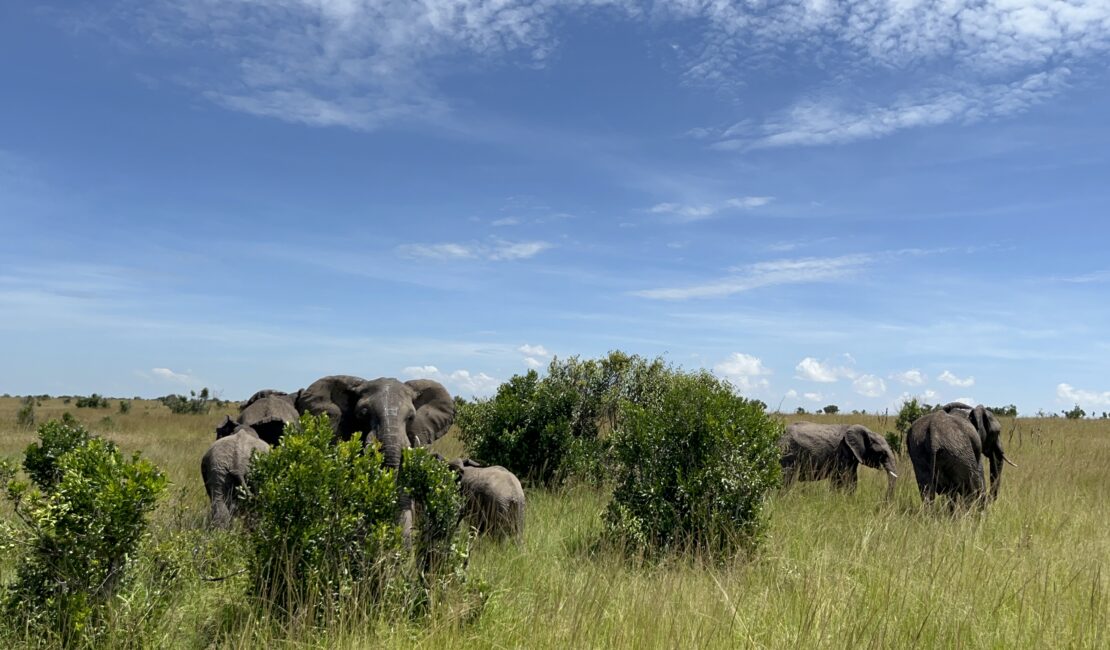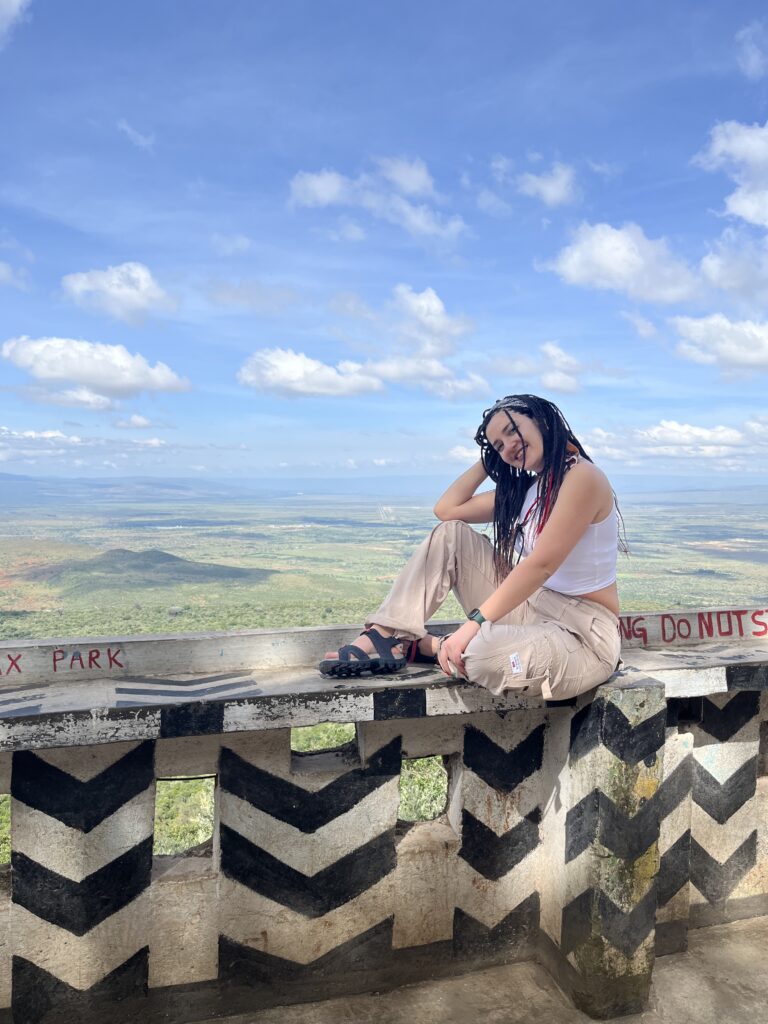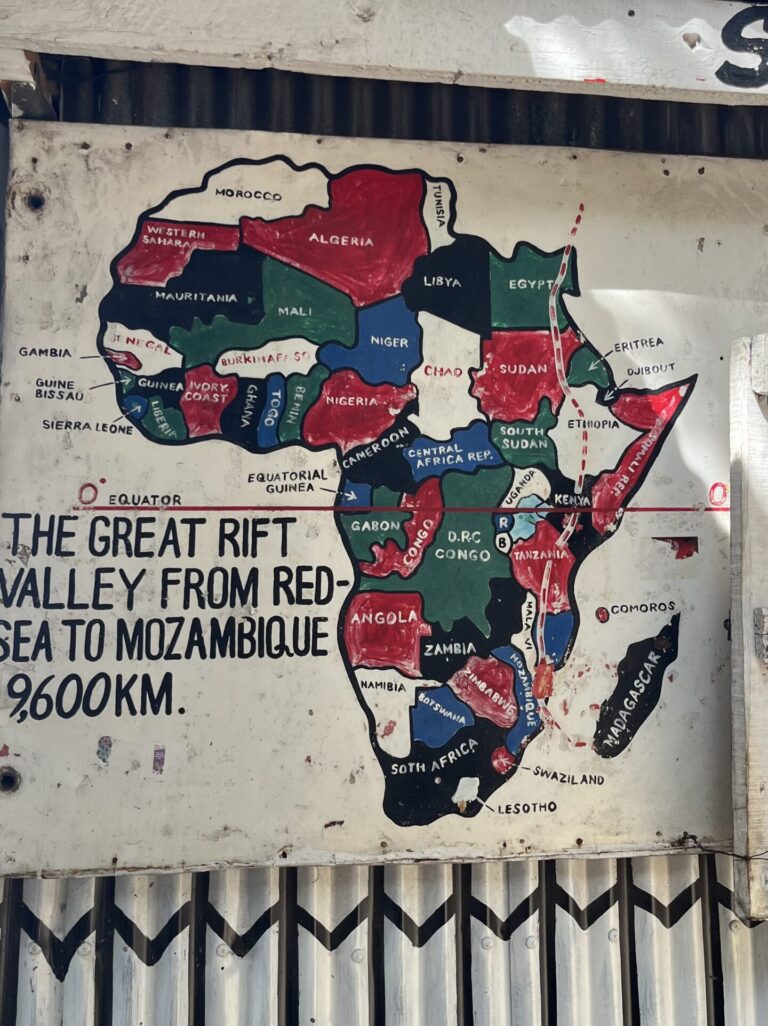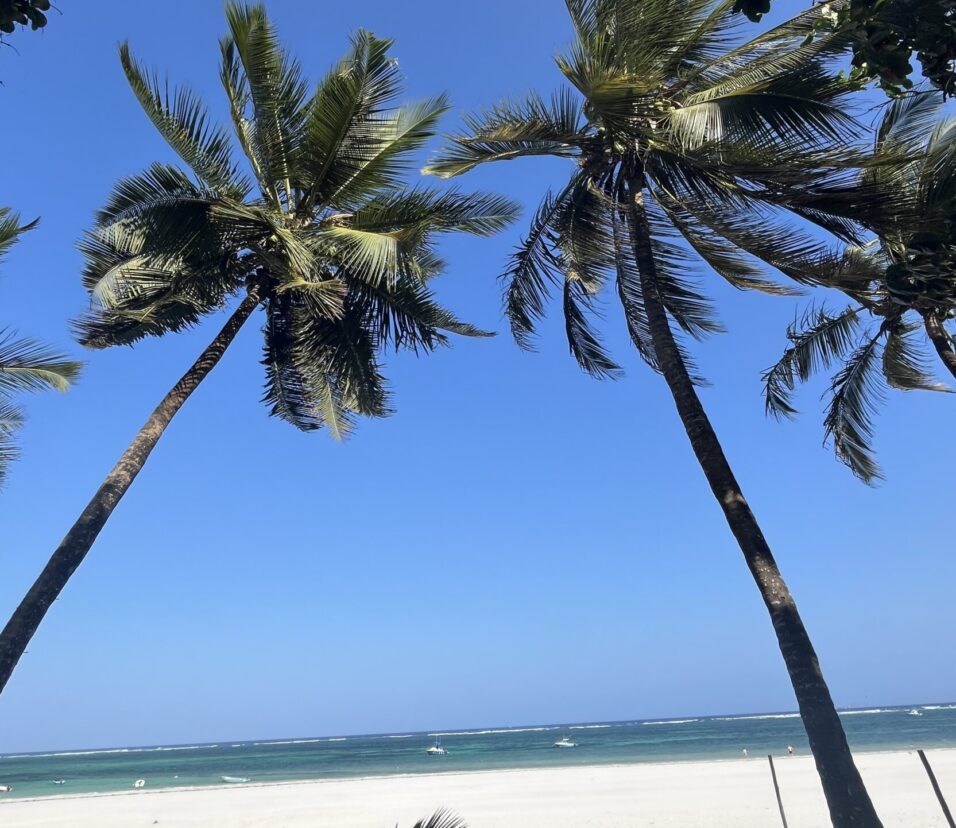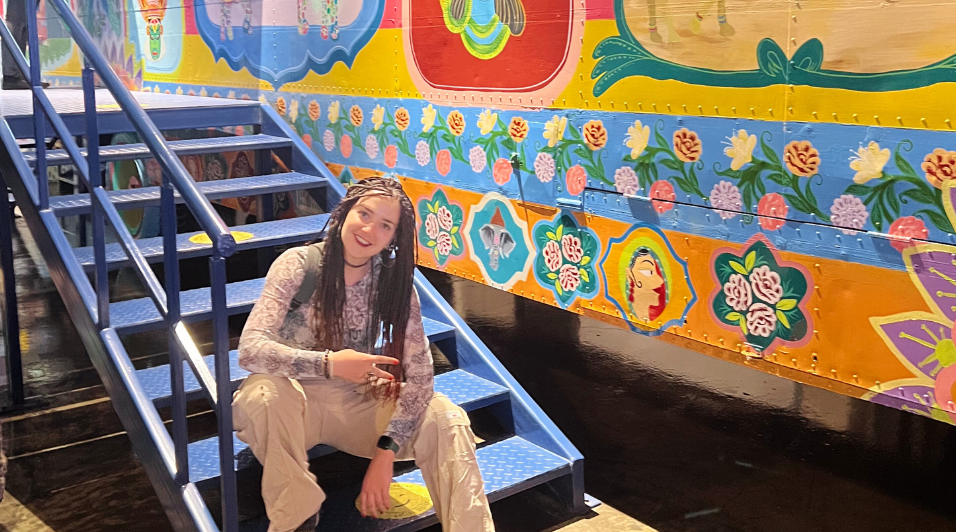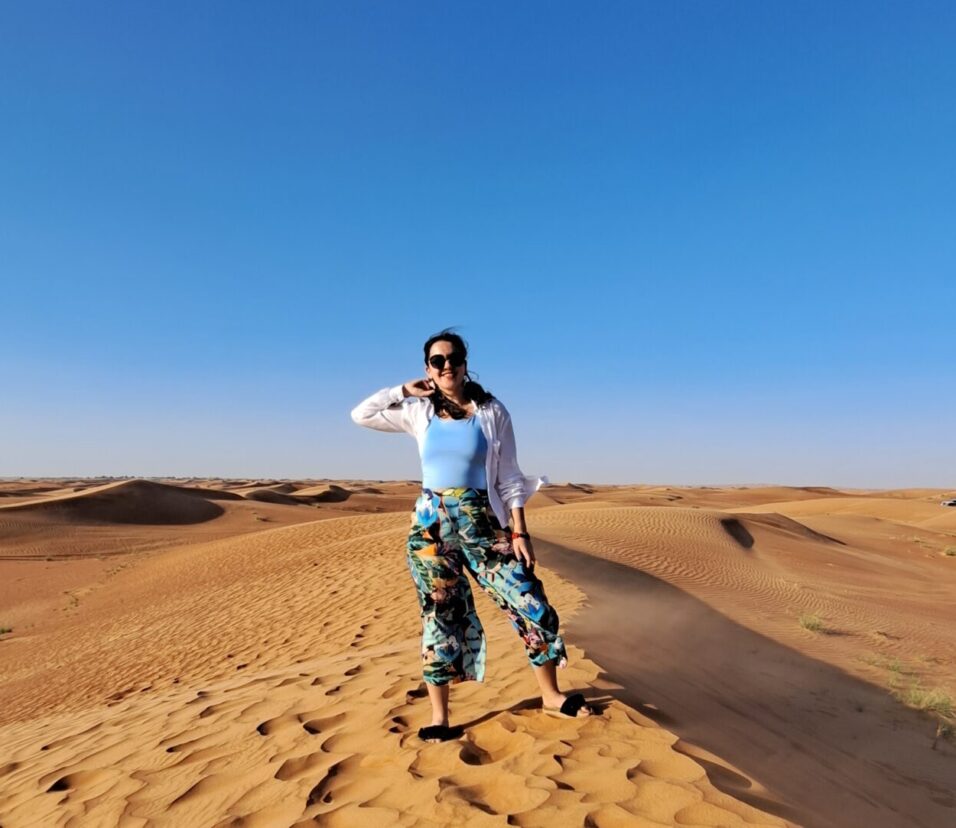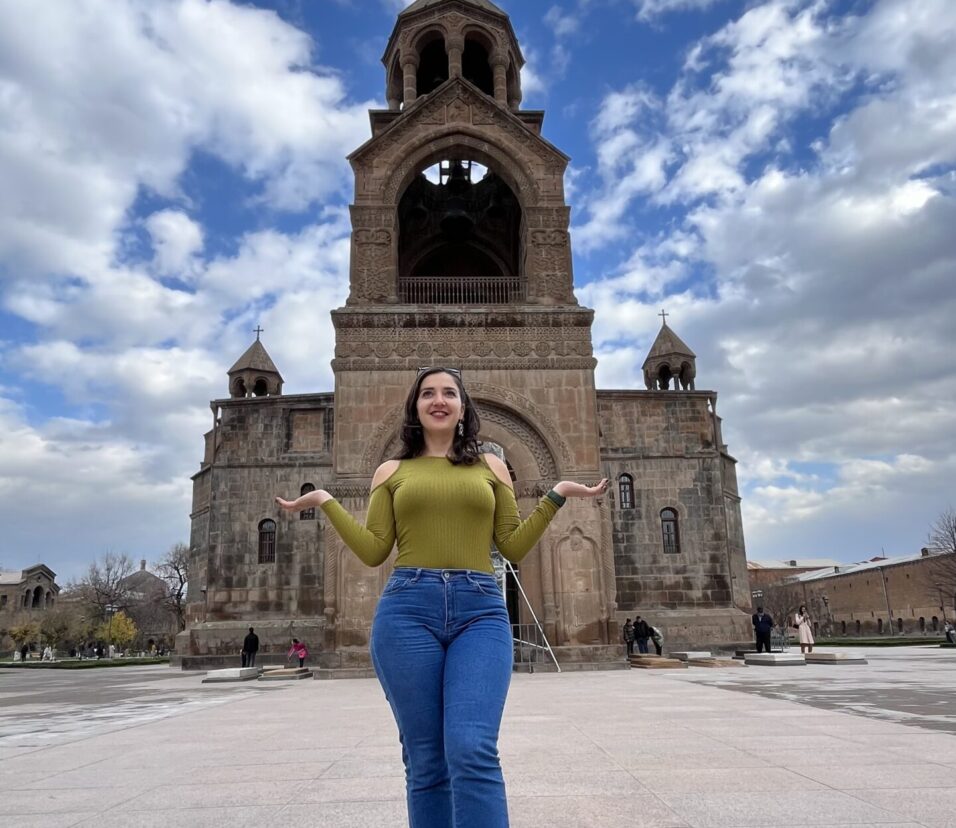Africa always seemed like a distant reality to me, more a setting for movie scenes than a place I could actually visit. I’ve always been a hands-on learner, needing to dive in and try things myself to really understand them. This is true whether I’m solving math problems or exploring new cultures. That’s why I felt compelled to journey to Africa and experience its diverse cultures firsthand. Traversing different countries and experiencing new cultures has fostered an anthropological perspective within me. Thus, my journey to Africa became imperative for me to know more about this part of the world.
The revelation that Kenya alone boasts 43 distinct tribes, each with its own language, impressed me. Our guide, Francis, was a member of the Kikuyu population. Each of them have their own traditions and makes Africa very diverse, but at the same time, there’s something that pulls them together.
Securing a reliable and affordable safari agency proved to be a daunting task. Nonetheless, the agency we ultimately selected provided us with an unforgettable experience, complemented by the exceptional guidance of Francis. The first morning, they arrived unexpectedly an hour earlier than scheduled, defying the prevalent rumours of Kenyan tardiness. We had prepared everything the previous night so we managed pretty well. The Jeep was awaiting us near city centre, and like that, we embarked on our journey to Maasai Mara.
The journey was an adventure on it’s own. Getting a glimpse into rural Kenya felt surreal, as if the the jeep window was screeing a videoart. It was a lot to take in at that moment. Just remember, it was only our second day in Kenya and Sub-Saharan Africa. Up until then, we had only seen Nairobi. During our journey, we took a few short breaks, one of which treated us to breathtaking views of the Great Rift Valley spanning from the Red Sea to Mozambique, 9,600 kilometers. After a lunch stop, we finally arrived at the camp just outside the park, close to a Maasai village. We got there just in time to prepare for our first game drive in the Mara, which means “spotted” and spotted it was.
While Francis got our park passes, a group of Maasai women approached our Jeep, offering crafted souvenirs. They were very nice.
Upon entering the park, we were greeted by a monkey. Passing by the iconic tree synonymous with Maasai Mara, a lone wildebeest was resting in its shade. As I tried to saviour the atmosphere, everyone else in the jeep was busy snapping photos, shooting videos, and sharing their observations. I tend to be quieter in situations like this.



However, the atmosphere encouraged me to capture some nice photos and videos. I hope to find time later to edit them together. After a few minutes, we encountered giraffes, zebras, warthogs, various types of antelopes (hundreds of them), a lone elephant (male elephants are known to live solitarily), and soon after, the imposing Cape Buffalo. Just within a 2 hour game drive, we saw 2 of the Big Fives and 2 zebras mirroring.
On the second day, we left our camp promptly at 7:30 am, which was considered late for Kenya, but unavoidable for tourists like us. The Maasai ladies were still waiting for us at the entrance of the National Park. This time, our goal was clear: we were determined to spot lions. After driving around for a while, enduring what locals called ‘a free African massage’ due to the rough terrain, we finally spotted a lone, hungry lioness strolling by our jeep. It was a remarkable sight, but what awaited us next was even more astounding.
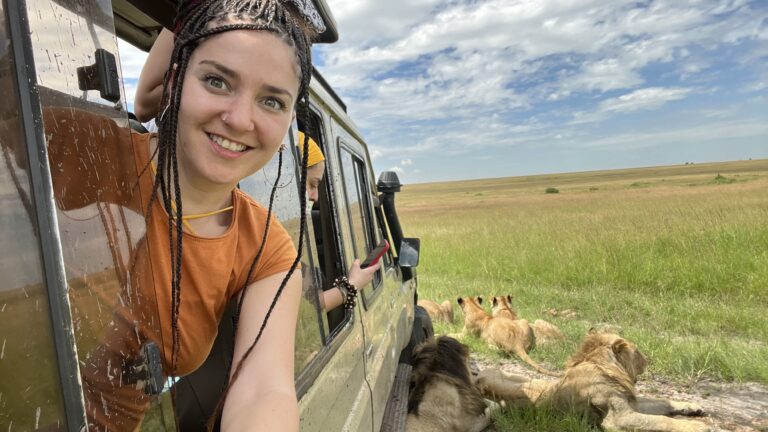
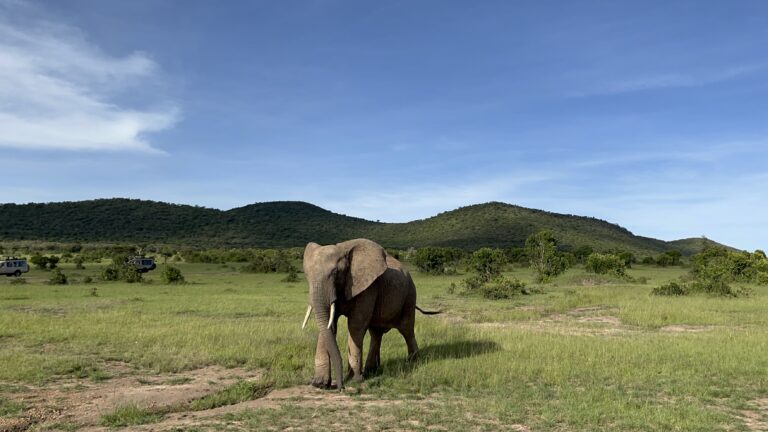

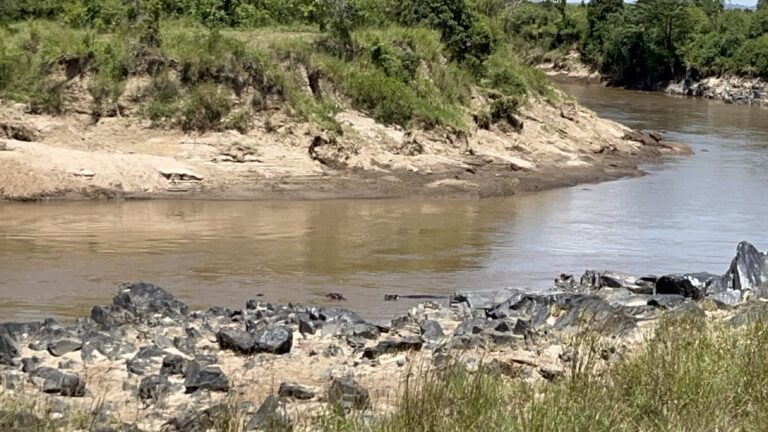
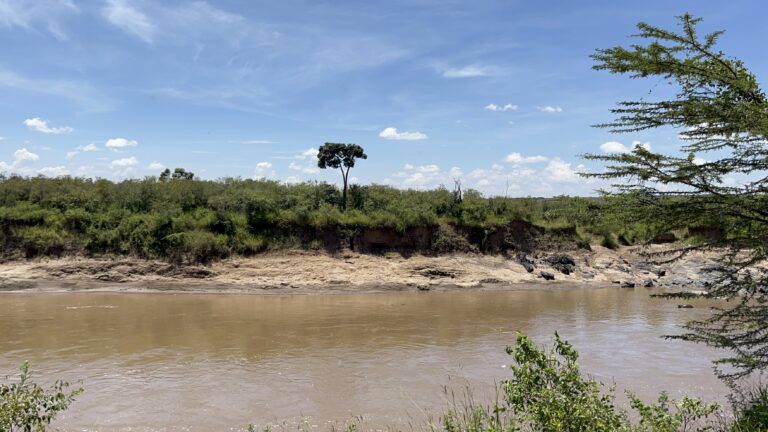
After an hour of driving, amidst the chatter of the radio as drivers coordinated with each other, we reached our ultimate destination. The entire pride of lions was gathered near a small patch of shade where a male lion was lounging. They lingered around the tree for some time, exhibiting typical feline behavior, before gradually departing one by one. The last to leave was the old male, who boldly approached my window and settled down in the shade cast by the jeep. Though exhilarated, I couldn’t help but close my window, just to be safe. It’s important to remember that wildlife always takes precedence in Kenya, and interfering in any way is strongly discouraged.
As we patiently waited for the lion to move on, we were treated to an extraordinary sight: the entire pride, including a tiny cub believed to be just two weeks old, congregated around our jeep. Being in such close proximity, we could even hear the lioness’s gentle growls. Words fail to capture the myriad of emotions everyone experienced in those moments.

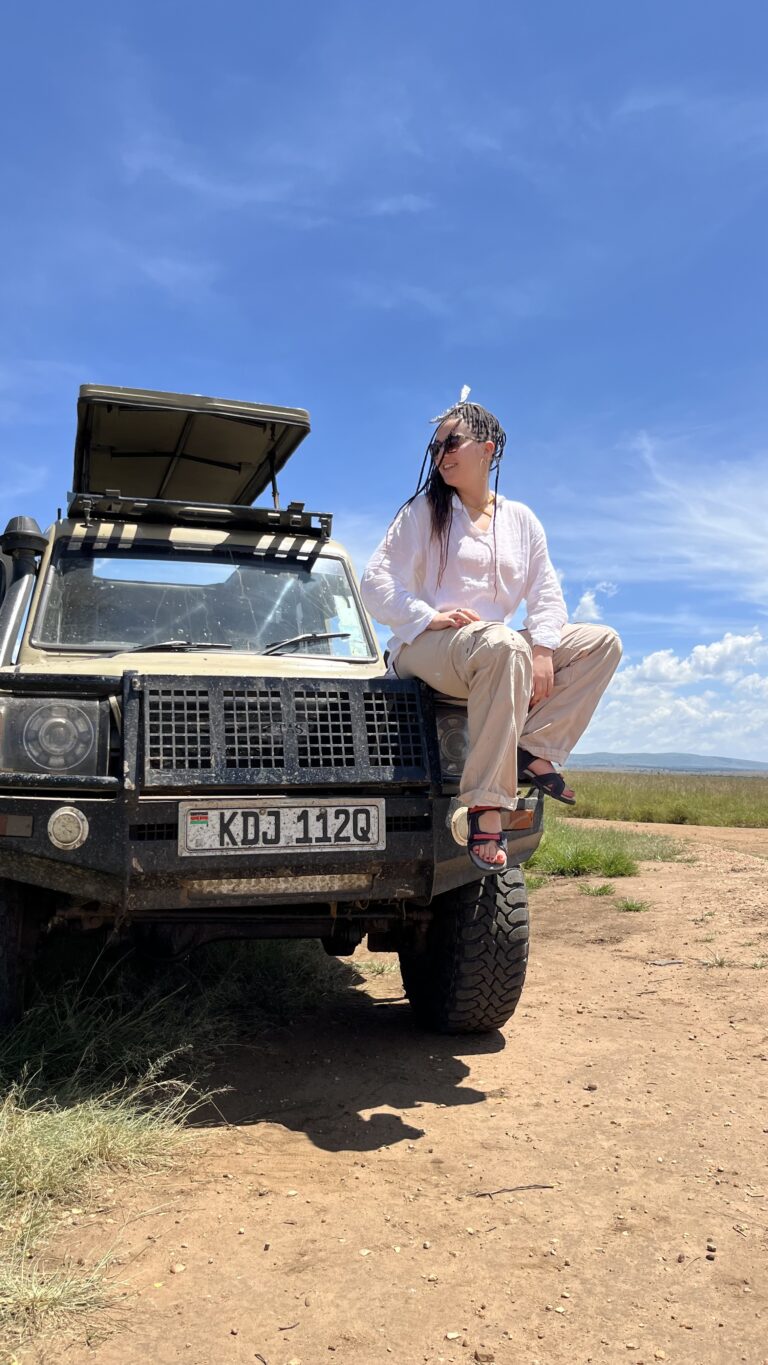
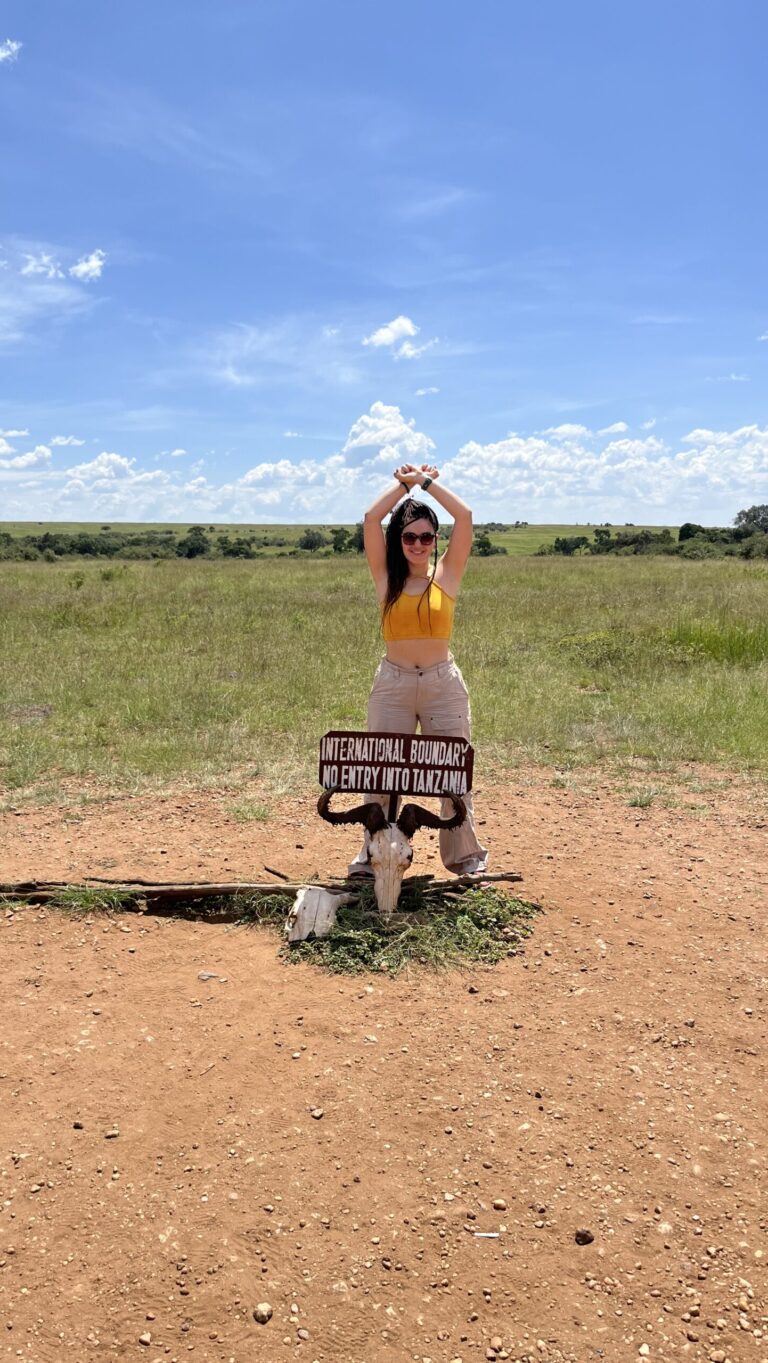
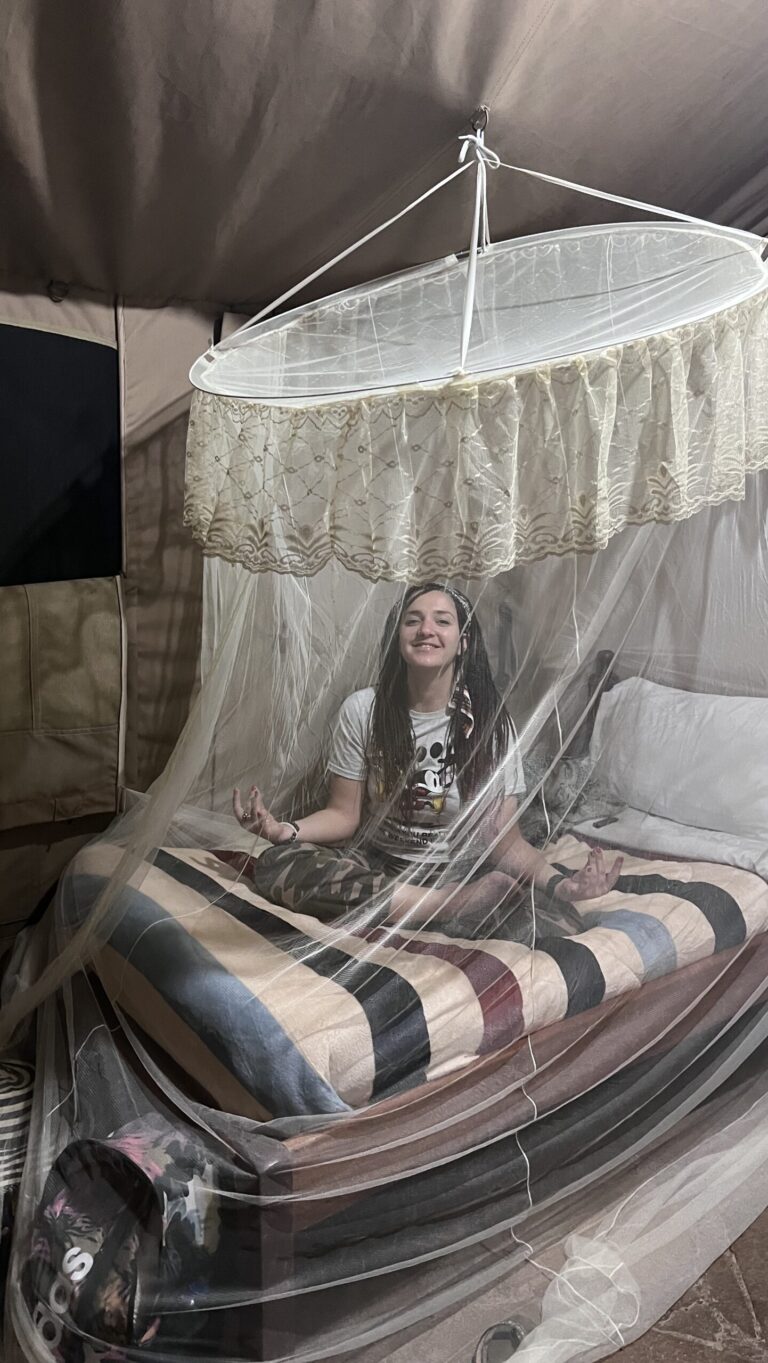

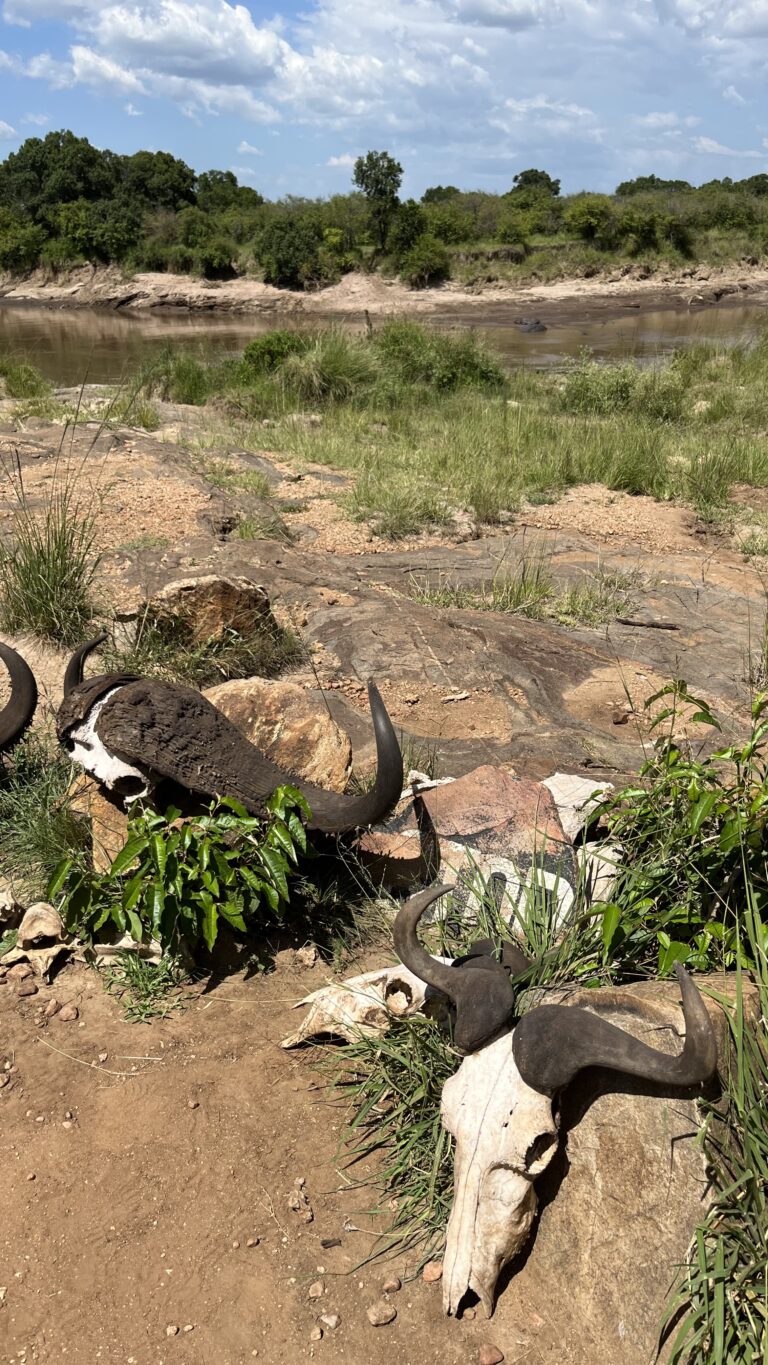
Following the lion encounter, we continued our drive and came across another elephant family, this time walking together instead of grazing. Afterwards, we made our way to the Mara River. Since it was February, we missed the Great Migration, but enjoyed the serene atmosphere with no other jeeps around, allowing us to observe hippos and crocodiles. It was startling to learn that hippos, despite their comical appearance, are the number one killers of humans.
After admiring the view for a while, we stopped at the park’s clean restroom facilities before finding a picturesque spot under an Acacia tree for our lunch picnic. The picnic was delightful, offering the perfect opportunity to capture memories against the backdrop of the landscape and our trusty jeep.
Continuing our journey, we eventually reached the border with Tanzania, where the absence of fences allowed animals to roam freely. After spending some time there, we headed back to our camp, where we concluded our safari day around the fire, engaging in captivating conversations with the camp staff.
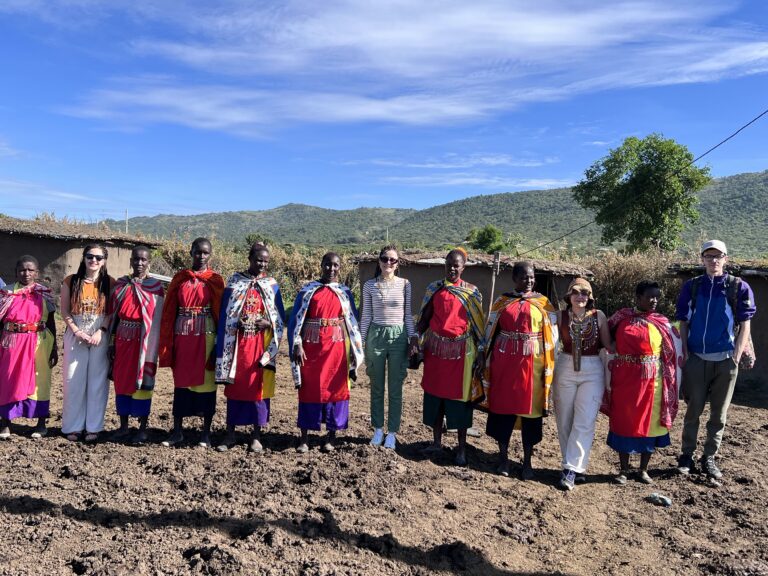
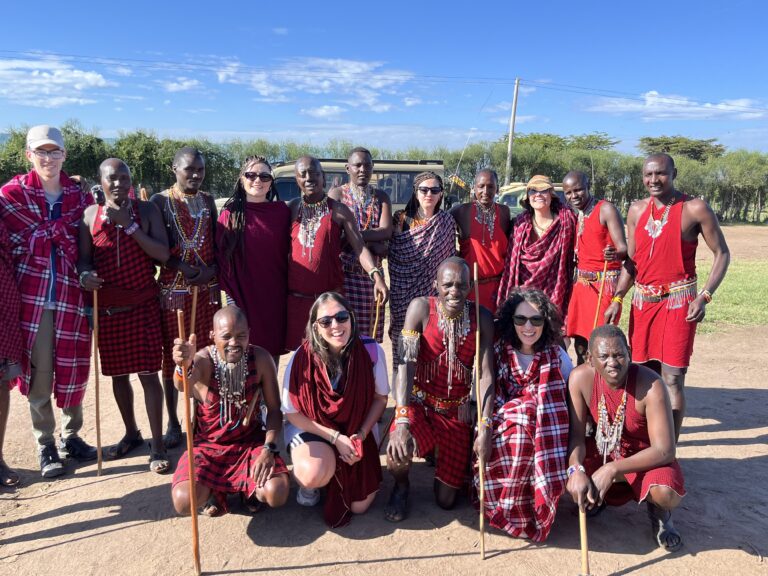
Our last day in the Mara culminated in a visit to a Maasai village, where we made a donation of around $20 each, contributing to the village school and children. Welcomed by the men’s dance, which showcased their jumping prowess, the higher a Maasai could jump, the lower the dowry he had to pay to marry a bride. We witnessed fire-making demonstrations and peeked inside the traditional manyatta houses, built by women in two months and capable of housing a family for up to nine years. As polygamy is common among the Maasai, we learned that the village chief had ten wives. They bid us farewell with a women’s dance, distinct from the men’s, which was infused with prayers as they danced. And just like that we embarked on our journey to Nakuru.


